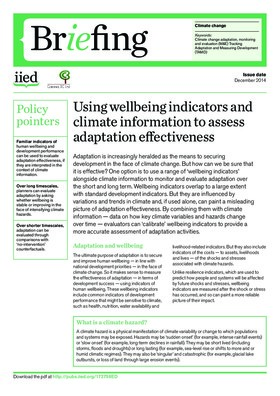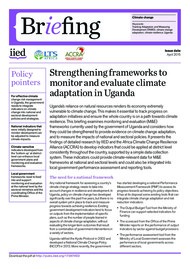Using wellbeing indicators and climate information to assess adaptation effectiveness

Adaptation is increasingly heralded as the means to securing~development in the face of climate change. But how can we be sure that it is effective? One option is to use a range of ‘wellbeing indicators’ alongside climate information to monitor and evaluate adaptation over the short and long term. Wellbeing indicators overlap to a large extent with standard development indicators. But they are influenced by variations and trends in climate and, if used alone, can paint a misleading picture of adaptation effectiveness. By combining them with climate~information — data on how key climate variables and hazards change over time — evaluators can ‘calibrate’ wellbeing indicators to provide a more accurate assessment of adaptation activities.
Cite this publication
Available at https://www.iied.org/17275iied






